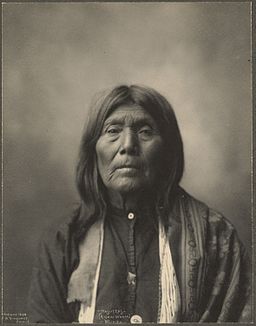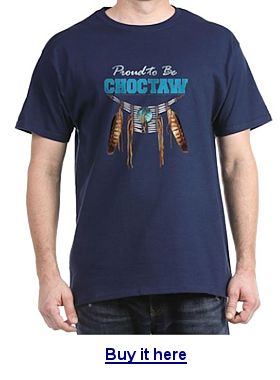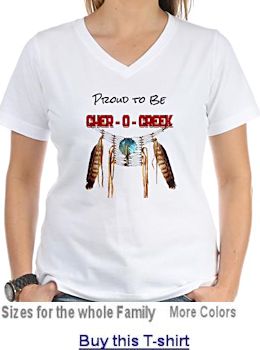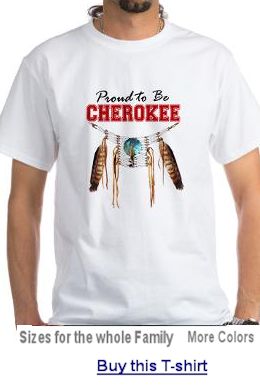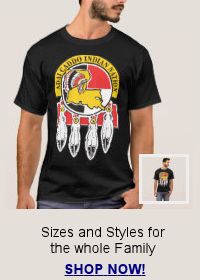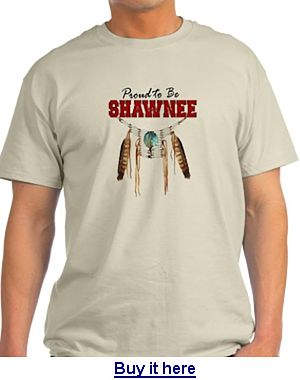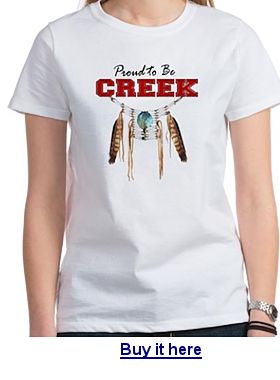The Keechy Tribe was a Native American Southern Plains tribe that lived in Texas, Louisiana, and Oklahoma. Also known as the Kichai, they were most closely related to the Pawnee.
Koroa Indians
22 ViewsThe Koroa Indians are one of many “small tribes” of the Southeastern United States that are mentioned briefly in historic accounts and then fade from the records during the colonial period. There is evidence that some Koroa may have resided in present-day Arkansas in the late seventeenth century, but the ancestral homeland, cultural roots, and historic fate of the Koroa remain issues of disagreement among today’s scholars.
Beothuk Indians
23 ViewsThe Beothuk were the aboriginal inhabitants of Newfoundland when Europeans arrived, and were the first indigenous people the Europeans encountered in North America. They are now an extinct tribe, at least as a culture. Recently, dna has been found in Iceland that indicates, they may, indeed, have some descendants still living.
Law360, New York (February 16, 2016, 3:13 PM EST) — A suit by a New Jersey tribe claiming the state has reneged on its official acknowledgment of the group illustrates the confusion that can crop up around state recognition as tribes navigate a state’s particular process to achieve and maintain that status for the sake of potentially uncertain benefits.
Duwamish Tribe
22 ViewsThe Duwamish Tribe are an unrecognized Lushootseed Native American tribe in western Washington, and the original indigenous people of metropolitan Seattle. The Duwamish tribe descends from at least two distinct groups from before intense contact with people of European ancestry—the People of the Inside (the environs of Elliott Bay) and the People of the Large Lake (Lake Washington).
Juaneño Band of Mission Indians
32 ViewsThe Juaneño Band of Mission Indians is recognized by the State of California, but is not federally recognized. They traditionally lived along the coast in what is now Orange and San Diego counties in California.
Chattahoochee Creeks
22 ViewsThe Chattahoochee River is where at least 32 ethnic groups came to live in the 1700s. They assimilated to become the Creek Indians by the end of that century.
San Luis Rey Band of Mission Indians
22 ViewsThe ataaxam people have occupied the San Luis Rey Valley in California since the beginning of time. The San Luis Rey Band of Luiseño Indians has kept its identity as a people within the local communities that now exist on those ancestral tribal lands.
Choctaw Apache Tribe of Ebarb
22 ViewsThe Choctaw Apache Tribe of Ebarb is located in western Sabine Parish, Louisiana. They are recognized by the state of Louisiana and have petitioned for federal recognition.
Accohannock Indian Tribe
26 ViewsThe Accohannock Indian Tribe was originally a sub-tribe of the Powhatan Nation. The Accohannock Indian Tribe is one of the oldest historical tribes in Maryland.
Pamunkey Indian Tribe
27 ViewsMore than 400 years after the first permanent English settlers encountered these Indians, the Pamunkey Nation was finally granted federal recognition in 2015.
Tejon Indian Tribe
22 ViewsThe Tejon Indian Tribe of California is a federally recognized tribe of Kitanemuk, Yokuts, and Chumash indigenous people of California.
Shinnecock Indian Nation
22 ViewsBrief Summary:
Santa Rosa Rancheria is the reservation of the Santa Rosa Indian Community of the Santa Rosa Rancheria. They are a federally recognized Tachi Yokut tribe.
Pensacola Indians
24 ViewsThe Pensacola Indians were a Native American people who lived in the western part of what is now the Florida Panhandle and eastern Alabama for centuries before first contact with Europeans until early in the 18th century. They spoke a Muskogean language. They are the source of the name of Pensacola Bay and the city of Pensacola. They lived in the area until the mid-18th century, but were thereafter assimilated into other groups.
The Biloxi-Chitimacha Confederation of Muskogee were recognized as a tribe by the state of Louisiana in 2005. They previously split off from the United Houma Nation, Inc., and applied for Federal Recognition in 2008. Their application is still waiting for review.
Cher-O-Creek Intra Tribal Indians
22 ViewsThe Cher-O-Creek, Intra Tribal Indians bloodlines are composed of more than one Native Blood of the Five Civilized Tribes indigenous to the State of Alabama, primarily Creek and Cherokee. Many of Cher-O-Creek members have both Creek and Cherokee bloodlines.
Cherokee Tribe of Northeast Alabama
22 ViewsThe Cherokee Tribe of Northeast Alabama (CTNEAL) is recognized by the State of Alabama, and has a representative on the Alabama Indian Affairs Commission and the Inter-Tribal Council of Alabama. It is one of nine state-recognized tribes. The federally recognized Cherokee Nation has disputed the validity of this and other state-recognized tribes claiming Cherokee descent.
Meherrin Indian Tribe
22 ViewsThe Meherrin Indian Tribe are the only non-reservation Indians in North Carolina who still live on their original Reservation lands. They were recognized by the state of NC in 1986. The Meherrin Nation is one of eight state-recognized Nations of Native Americans in North Carolina. They reside in rural northeastern North Carolina, near the river of the same name on the Virginia-North Carolina border.
Lumbee Tribe of North Carolina
23 ViewsThe Lumbee Tribe is the largest indian tribe in North Carolina, the largest tribe east of the Mississippi River and the ninth largest tribe in the nation that does not have Federal Recognition. They have been recognized by the State of North Carolina since 1885.
Haliwa-Saponi Indian Tribe
22 ViewsThe Haliwa-Saponi Indian tribe is recognized in the state of North Carolina Tribal members are direct descendents of the Saponi, Tuscarora, Tutelo and Nansemond Indians.
Coharie Tribe
32 ViewsThe Coharie Indian Tribe is recognized as an indian tribe by the State of North Carolina. They are descended from the Iroquoian-speaking Neusiok and Coree, as well as the Carolinan Iroquoian Tuscarora, and the Siouan Waccamaw, who occupied what is now the central portion of North Carolina. The Coharie have intermarried predominantly with the Lumbee and Tuscarora Indians of Robeson County, as well as with the Eastern Band of Cherokee Indians.
The Echota Cherokee Tribe of Alabama are the descendants of those Indian people who escaped the infamous “Trail of Tears” by hiding out in the mountainous backwoods and lowlands of the Southeast. Others fled from the march after it began and others simply walked away and came home after reaching Indian Territory. They are state recognized by the State of Alabama.
MOWA Band of Choctaw Indians
22 ViewsThe MOWA Band of Choctaw Indians are a state-recognized American Indian tribe located in southern Alabama, primarily in Washington and Mobile counties. The MOWA Choctaw Reservation is located along the banks of the Mobile and Tombigbee rivers, on 300 acres near the small southwestern Alabama communities of McIntosh, Mount Vernon and Citronelle, and north of Mobile.
Beaver Creek Indians
93 ViewsThe Beaver Creek Indians are the descendents of some thirty odd mixed-blood South Carolina tribes that merged together after smallpox and measles epidemics, and through intermarriage with other tribes, Europeans, and African Americans.
Adai Caddo Indian Nation
45 ViewsAdai Caddo Indian Nation is the name of a Native American people of northwestern Louisiana and northeastern Texas with a Southeastern culture. They are recognized as an indian tribe in the state of Louisiana.
Shawnee Tribe
22 ViewsThe Shawnee Tribe is one of three federally recognized Shawnee tribes. They were the last Shawnee to relinquish their Ohio territory, and the last Shawnee tribe to gain federal recognition.
Westo Indians
22 ViewsThe Westo Indians lived in South Carolina along the central Savannah River in Colleton County. They apparently became extinct sometime before the early 1700s.
Lipan Apache Tribe
22 ViewsPresent-day Lipan Apaches mostly live throughout the U.S. Southwest, in Texas, and on the San Carlos Apache Indian Reservation in Arizona, as well as with the Mescalero tribe on the Mescalero Reservation in New Mexico. The San Carlos and Mescalero tribes have federal recognition. The Lipan Apache Tribe is a state-recognized tribe headquartered in McAllen, Texas. Some Lipans also live in urban and rural areas throughout North America (Mexico, United States and Canada).
Aberginian Indians
23 ViewsAberginian is a collective term used by the early settlers on Massachusetts Bay for the tribes to the north. They were described in 1654 as consisting of the Massachusett, Wippanap, and Tarratine tribes.
Ababco tribe
27 ViewsThe Ababco were an eastern Algonquian tribe or sub-tribe.
The earliest history of the Nehalem country is so closely entwined with that of the Clatsops of the north and the Tillamooks of the south that its separation is impossible. From the very earliest written record of the Clatsop and Nehalem people, they are described as being culturally, economically, and socially integrated with one-another.
Calusa Indians
22 ViewsThe Calusa Indians were a formidable Florida tribe who formerly held the southwest coast from about Tampa Bay to Cape Sable and Cape Florida, together with all the outlying keys, and extending inland to Lake Okeechobee. They also claimed authority over the tribes of the east coast, north to about Cape Canaveral.
The city of Tampa, Florida is named after and on the site of one of their principle villages.
Utina Indians or Timucua Indians
24 ViewsThe Utina, with the possible exception of the Potano, was the leading Timucua division in Florida and gave its name to the whole. They lived along the Suwannee River to the St. Johns and eastward, though some of the subdivisions given should be rated as independent tribes.
The Agna Dulce Indians were often referred to as the Freshwater Tribe. This name applied to the people of seven to nine neighboring towns which were related to the Acuera Indians. They lived along the coast of eastern Florida between St. Augustine and Cape Canaveral.
Acuera Indians
23 ViewsThe Acuera Indians belonged to the Timucuan linguistic division of the Muskhogean linguistic family. They lived near the the headwaters of the Ocklawaha River in what is now Florida.
Upper Mattaponi Indian Tribe
23 ViewsThe Mattaponi were one of six tribes inherited by Chief Powhatan in the late 16th century. The tribe spoke an Algonquian language, like other members of the Powhatan Chiefdom. The paramount chiefdom of the Powhatan numbered more than 30 tribes by the time the English arrived and settled Jamestown in 1607.
In addition, a Mattaponi band had long been settled outside the reservation at an unincorporated hamlet called Adamstown, located on the upper reaches of the Mattaponi River. This has been identified as Indian land in records dating to the 17th century. In 1921, the Upper Mattaponi Tribe of Adamstown organized as an official group separate from the main Mattaponi population who resided on the reservation.
Chinook Indian Nation
22 ViewsThe Chinook Indian Nation consists of the western most Chinookan people. This tribe includes bands of Lower Chinook, Clatsop, Willapa, Wahkiakum and Cathlamet. They have always resided in the lower Columbia River region.
The Hualapai Tribe is a federally recognized Indian Tribe located in northwestern Arizona. “Hualapai” (pronounced Wal-lah-pie) means “People of the Tall Pines.” In 1883, an executive order established the Hualapai reservation.
Acolapissa merged with the Houma
24 ViewsThe Acolapissa disappeared as a separate tribe during 1765, and their subsequent history is identical with the Houma with whom they merged. The Houma remained in Ascension Parish until 1776 when they were overrun by settlement. They sold their land to two French Creoles that year, but small groups of them remained in the vicinity until 1840. However, by 1785 the majority had moved southwest and concentrated in La Fourche and Terrebonne Parishes (Houma, Louisiana) about 25 miles from New Orleans.
Hia C-eḍ O’odham Tribe
22 ViewsThe Hia C-eḍ O’odham have often been considered a “Papago subtribe” by anthropologists, along with the Tohono O’odham and several groups that vanished or merged with the Tohono O’odham.
The Grand Portage Band of Lake Superior Chippewa Indians was considered to be part of the Lake Superior Band of Chippewa, but was not a party to the treaties that group signed. Since 1934, it has been one of the six bands making up the federally recognized Minnesota Chippewa Tribe, which wrote a constitution and initiated its new government in 1936.
Muwekma Ohlone Tribe
24 ViewsThe Muwekma Ohlone Tribe comprises all of the known surviving Native American lineages indigenous to the San Francisco Bay region who trace their ancestry through the Mission Dolores, Mission Santa Clara and Mission San Jose and who descend from members of the historic Federally Recognized Verona Band of Alameda County.
They received a favorable opinion from the U.S. District in Washington, D.C., of their court case to expedite the reaffirmation of the tribe as a federally recognized tribe on September 21, 2006. The Advisory Council on California Indian Policy assisted in their case. They lost the case in 2011, and have filed an appeal.
Chimariko Tribe of California
22 ViewsOriginally hunter-gatherers, the Chimariko are possibly the earliest residents of their region in California. They had good reliations with Wintu people and were enemies of the Hupa, a Southern Athabaskan people. Conflict between Chimariko and white miners led to almost total extinction of the entire population. The surviving Chimariko fled to live with the Hupa and Shasta and became extinct by 1900.
According to archeological digs, the Salinan people have occupied the Central Coast and inland areas of Calfornia for 10,000 years. Also known as the Antoniaño, this state recognized indian tribe has over 700 members.
Wyandotte Nation
23 ViewsThe Wyandot Nation is one of the most traveled Indian tribes in the history of the North American continent. This tribe is composed of remnants of three related tribes who once occupied portions of the provinces of Quebec and Ontario, Canada. The three tribes, the Hurons, the Nation du Petun, and the Neutral Nation, were all members of the Iroquoian linguistic family.
Blue Lake Rancheria
23 ViewsThe members of the Blue Lake Rancheria include people with Wiyot, Yurok, Tolowa, and Cherokee ancestry. This tribe is made up of the remnant survivors of the people who once lived along the Eel and Mad Rivers in northern California. Priror to Euro-American settlement, the ancestors of the Blue Lake Rancheria Tribe were primarily Wiyot.
Muscogee Creek Nation
22 ViewsWho are the Muscogee Creek Nation?
Early ancestors of The Muscogee Creek Nation constructed magnificent earthen pyramids along the rivers of what is now the Southeastern United States as part of their elaborate ceremonial complexes. The Muscogee later built expansive towns within these same broad river valleys in the present states of Alabama, Georgia, Florida and South Carolina.
Brief Summary.
